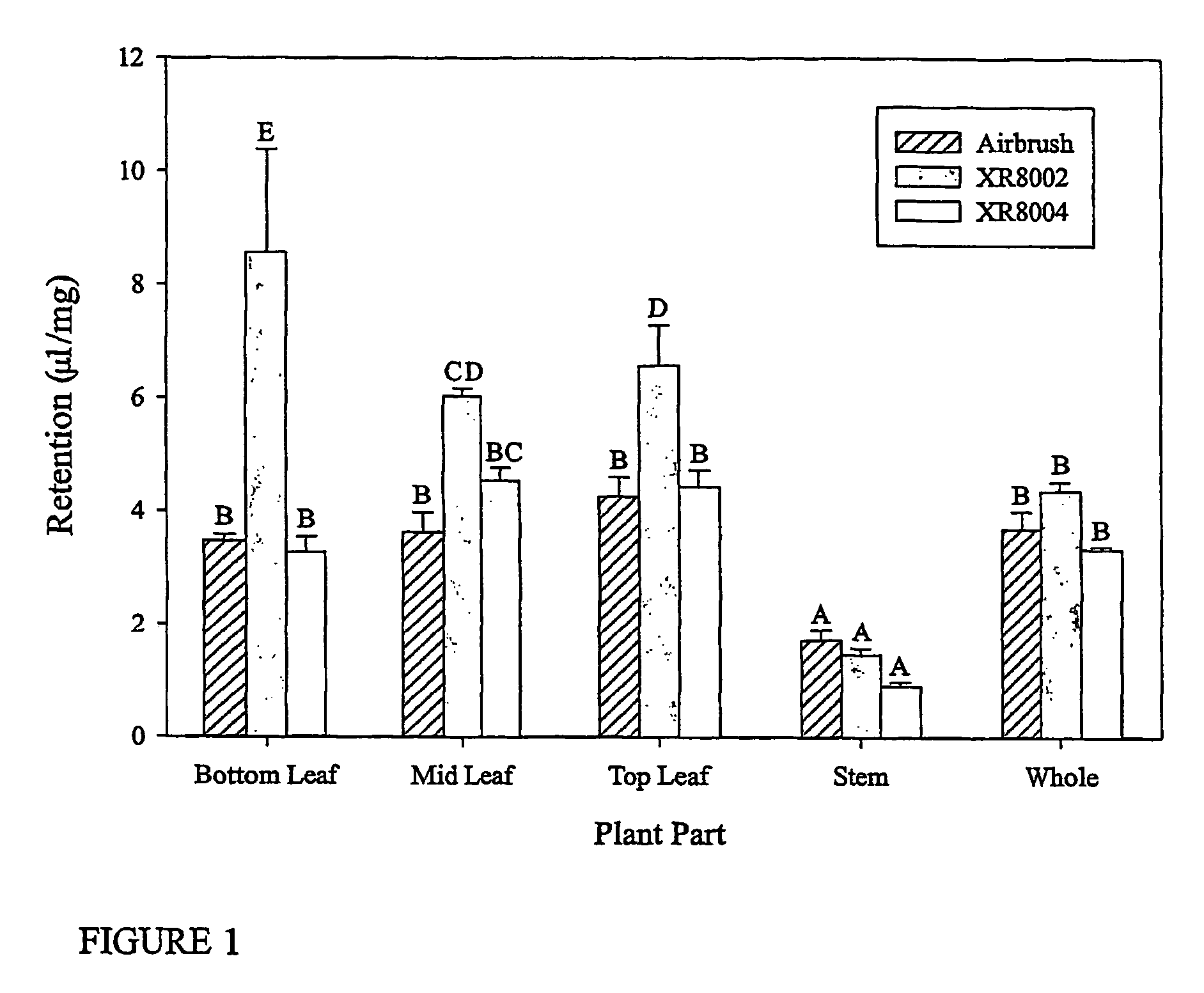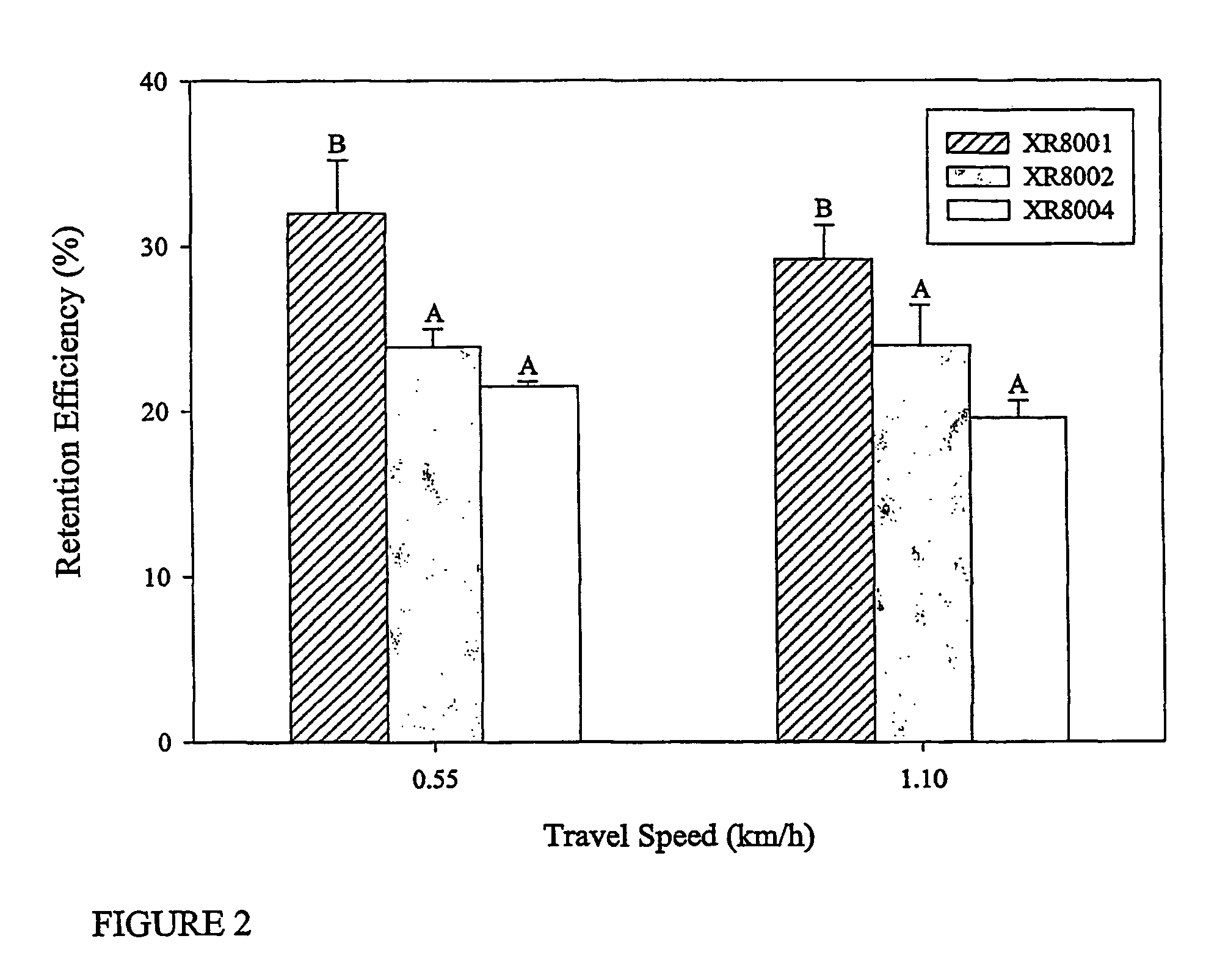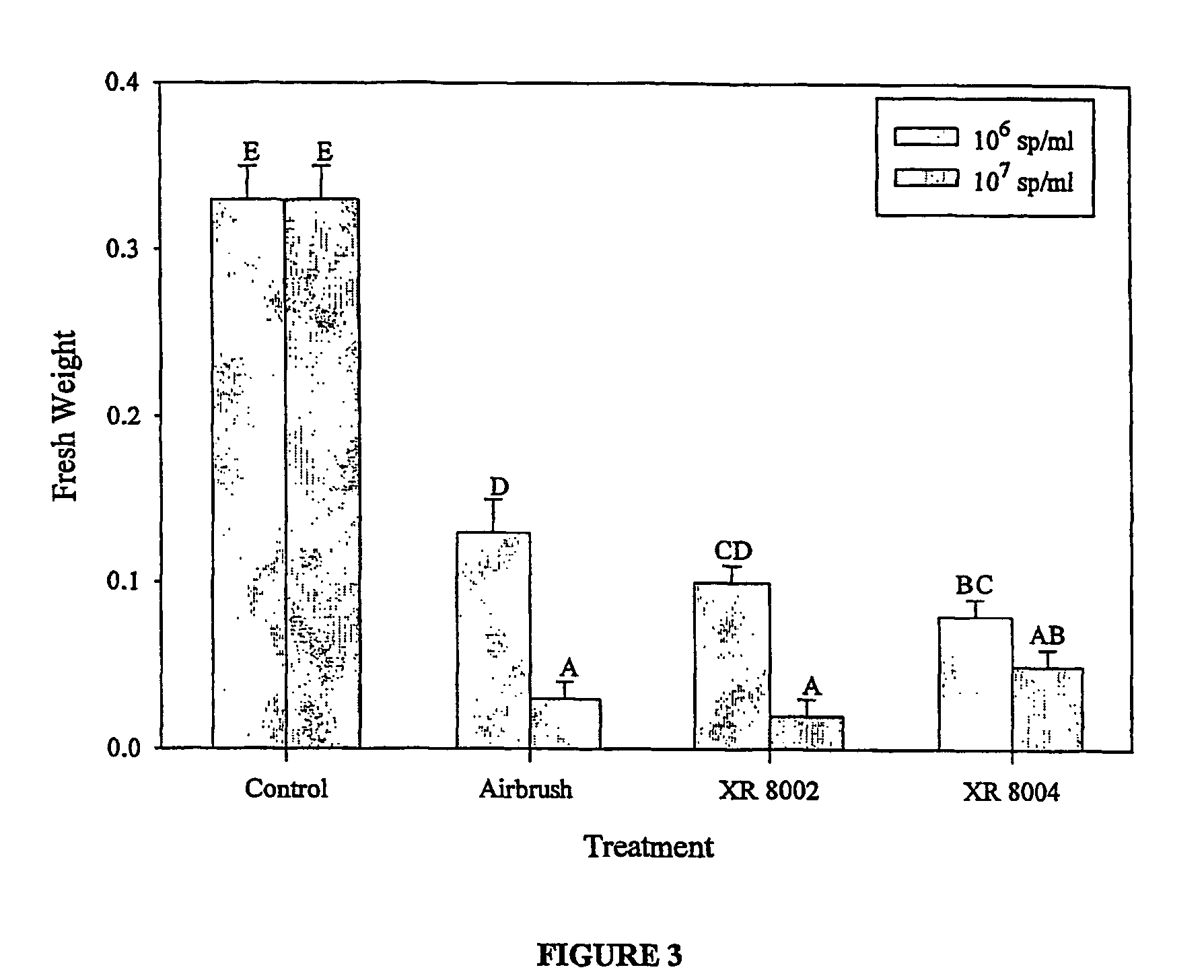Control of weed with a fungal pathogen
a fungal pathogen and weed technology, applied in the field of weed control with a fungal pathogen, can solve the problems of reducing the effectivity of biocontrol agents, poor previous attempts to control green foxtail weeds with biocontrol compositions, and no satisfactory biocontrol agents for controlling green foxtail, etc., to achieve suppression of weed growth and suppress weed growth.
- Summary
- Abstract
- Description
- Claims
- Application Information
AI Technical Summary
Benefits of technology
Problems solved by technology
Method used
Image
Examples
example 1
Spray Retention Studies
[0106]Six replicated pots, each containing 8 plants at the 3-leaf stage were used for all treatments. Plants were sprayed with a Rhodamine WT dye solution containing 0.1% (v / v) Tween 80 surfactant, and the relative retention of the spray on plants was estimated by washing plant tissues in ethanol and measuring the dye amount on a spectrophotometer (Wolf et al, 2000; which is herein incorporated by reference). Measurements were taken on various plant parts, as well as on the whole plant The top, mid, and bottom leaves were cut carefully and separated from the stem. Spray retained on individual parts and whole plants was measured separately, and reported in μl dye / mg plant dry matter.
[0107]To compare spray retention on plants using different application methods and droplet sizes, an airbrush sprayer and broadcast sprayer with a series of TeeJet flat fan nozzles were used. For airbrush application, approximately 3 ml of solution was applied to a pot of plants. Th...
example 2
Efficacy of Weed Control as Foliar-Applied Agents
[0115]An experiment was conducted to compare the three isolates Pyricularia setariae 94-409A, 01-069A or 01-071A for control of green foxtail. All inoculations were carried out using fungal spore suspensions applied with an airbrush sprayer to achieve runoff on the foliage of the weed at the 3-4 leaf stage. The spore concentrations were adjusted to sub-lethal doses at approximately 2-3×106 spores / ml. Inoculated plants were given 24 hours dew, then placed in the greenhouse. Disease severity at whole-plant level and plant fresh weight were measured one week after inoculation to determine the efficacy of weed control.
[0116]The three isolates of Pyricularia setariae all caused significant damage to green foxtail, as reflected by the percentage of disease and fresh weight reduction (Table 3).
[0117]
TABLE 3Effect of Pyricularia setariae isolates on green foxtailIsolateDisease severity (%)Fresh weight reduction (%)Control 1.17 ± 0.00* 0.00 ± ...
example 3
Crop Safety
[0119]Specificity of isolate 94-409A (IDAC 190701-1) was determined on a range of commercial cultivars using the methods outlined in Examples 1-3. All inoculations were done by airbrush spraying. Plants were given 48 hours of dew (twice as long as necessary for infection of green foxtail). Treatments: control =uninoculated plants, inoculated =plants inoculated with 94-409A spore suspensions. Disease ratings: done with the Horsfall-Barratt scale two weeks after inoculation and the data were converted to percent disease for statistical analyses. Each crop species was inoculated using 3-5 replicated pots, each containing 3 to 10 plants. The results of this experiment are present in Table 4.
[0120]
TABLE 4Reaction of common field-crop species to inoculation of Pyricularia setariaeCommonDiseasePlantSpeciesNameCultivarTreatmentseverity (%)reactionSetaria viridisGreen foxtailN / Ainoculated20.96Susceptiblecontrol1.33AgrostisCreepingUnknowninoculated1.17Immunestoloniferabentgrasscont...
PUM
 Login to View More
Login to View More Abstract
Description
Claims
Application Information
 Login to View More
Login to View More - R&D
- Intellectual Property
- Life Sciences
- Materials
- Tech Scout
- Unparalleled Data Quality
- Higher Quality Content
- 60% Fewer Hallucinations
Browse by: Latest US Patents, China's latest patents, Technical Efficacy Thesaurus, Application Domain, Technology Topic, Popular Technical Reports.
© 2025 PatSnap. All rights reserved.Legal|Privacy policy|Modern Slavery Act Transparency Statement|Sitemap|About US| Contact US: help@patsnap.com



